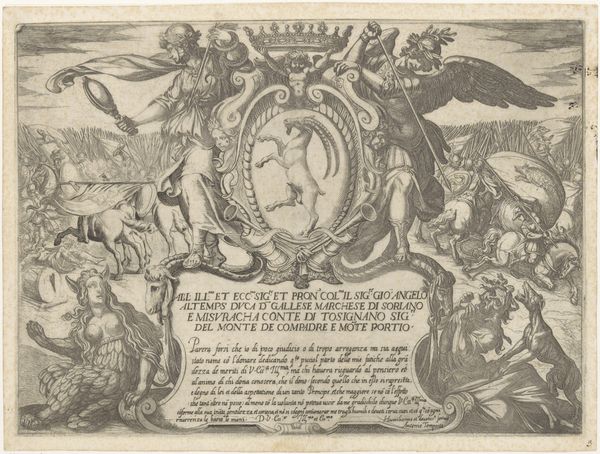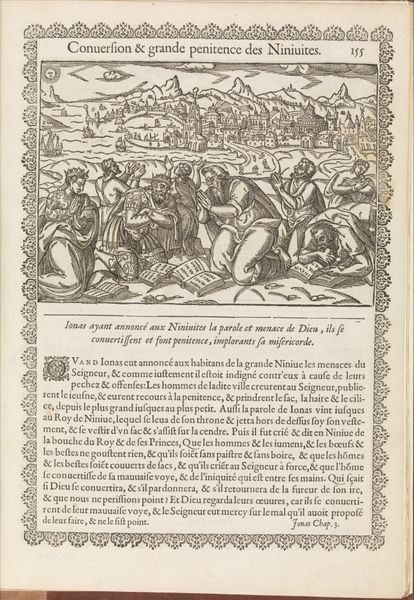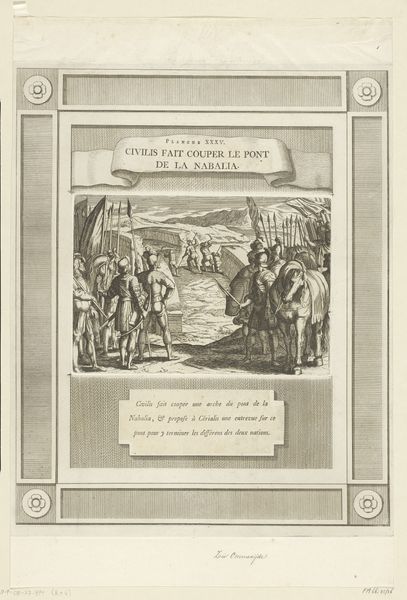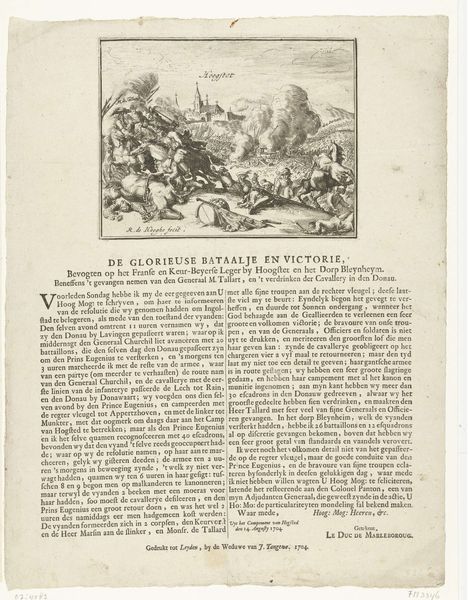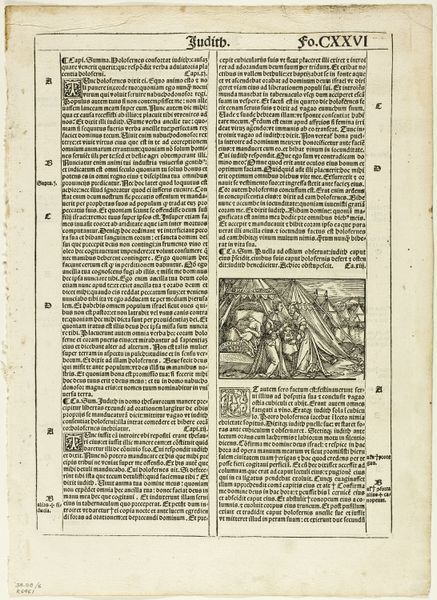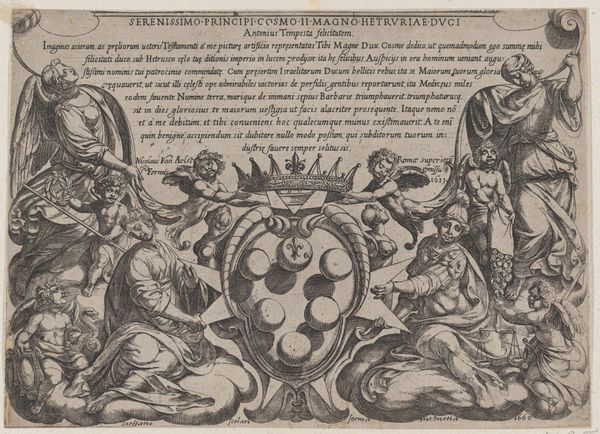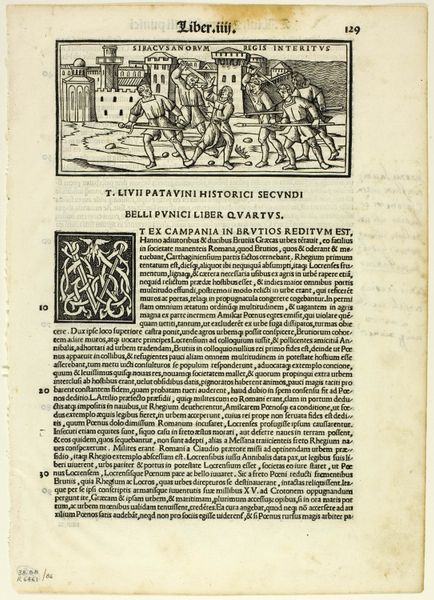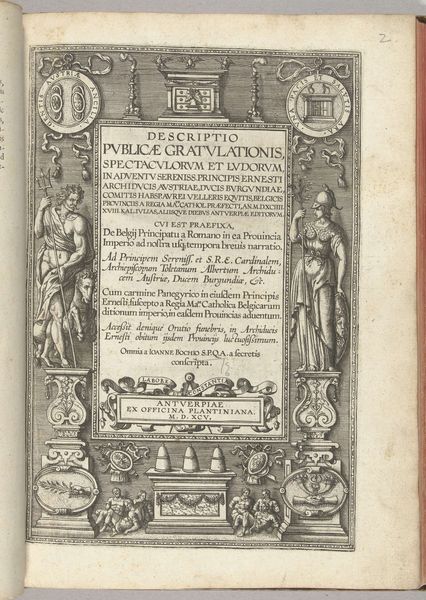
Oorkonde voor Johan Coutereels met Dood met zeis als strijder te paard valt dichter aan 1604
0:00
0:00
print, engraving
#
parchment
# print
#
11_renaissance
#
journal
#
history-painting
#
engraving
Dimensions: height 117 mm, width 159 mm, height 355 mm, width 278 mm
Copyright: Rijks Museum: Open Domain
Curator: Wow, there's a lot going on here. It feels almost frantic. Editor: Well, let’s try to unpack it a bit. What we’re looking at is an engraving from 1604 entitled "Oorkonde voor Johan Coutereels met Dood met zeis als strijder te paard valt dichter aan"— or, "Record for Johan Coutereels with Death with Scythe as Warrior on Horseback Attacks Poet." It's currently held at the Rijksmuseum. Curator: Right, that explains the drama. The title really sets the scene, doesn't it? You've got Death, front and center, a skeletal figure riding a horse and wielding a scythe like some grim reaper knight, about to take out a poet, no less! Editor: It's a powerful statement on mortality, of course. I read it as a commentary on the transience of life and the inevitability of death, even for those who strive for immortality through art and poetry. Curator: See, I find myself focusing more on the human figures, how vulnerable and fragile they look against the powerful figure of Death. One reclines in what seems like peaceful unawareness, almost nude. The poet seems terrified, understandably. Editor: Note how the artist, Johan Barra, situated the image amidst dense text. The words emphasize social leveling, reminding us how death does not discriminate—"Omnibus calcanda via lethi" reads the text: the way of death must be trod by all. Rich, poor, scholar, child, the horse of death tramples across us all. This connects to a larger trend in early modern art which confronted themes of morbidity and suffering directly, often linking these back to biblical narratives or philosophical debates. Curator: The amount of detail is striking—look at the delicate lines of the landscape in the background, contrasting sharply with the stark foreground figures. What catches me is how theatrical this all feels, like a scene from a play. The ornamental border adds a certain ceremonial quality. It makes the print appear not just as an artwork but a kind of dramatic declaration. Editor: Absolutely. And given that this was created during a period of significant social and religious upheaval, its message of universal mortality likely resonated deeply. Think of the historical circumstances that the work reflects: it reminds the audience that all earthly achievement crumbles in the face of the scythe. Curator: I think it’s interesting how much drama can be evoked from such sparse means, a black and white engraving still radiating so much urgent fear all these centuries later. Editor: Indeed, Johan Barra made a profound point that still haunts us, and shows us what connects us across time and circumstance.
Comments
No comments
Be the first to comment and join the conversation on the ultimate creative platform.


